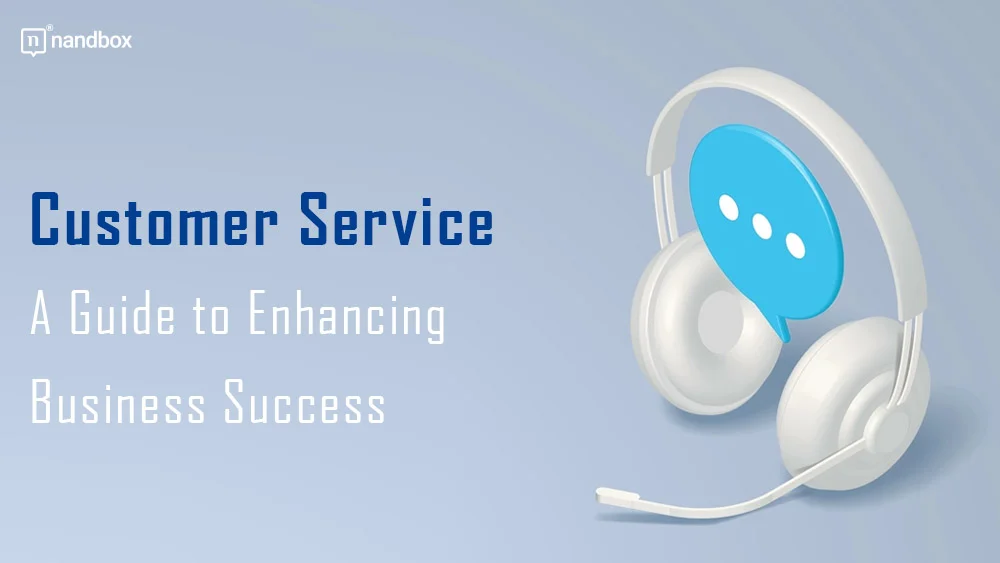Customer service is the backbone of any successful business, encompassing customer support before and after purchasing or using products and services. It’s a holistic approach that aims to create an easy, enjoyable, and fulfilling experience for customers. In the contemporary business landscape, customer service extends beyond traditional telephone support, now incorporating email, web, text messages, and social media as part of omnichannel customer service. Some companies also offer self-service support, enabling customers to find solutions independently at any time of the day or night. It’s more than just providing answers; it’s a fundamental aspect of the brand’s promise to its customers. So what are the benefits of great customer service?
In the past, factors like price, product quality, or service offerings might have been the primary considerations for customers. However, in today’s business environment, the overall experience holds more sway.
Benefits of Great Customer Service
- Improved Customer Retention: Building strong relationships with customers through great customer service fosters loyalty. When customers feel valued and appreciated, they are more likely to remain loyal to your brand.
- Increased Revenue: Loyal customers are likely to make repeat purchases and are inclined to spend more over time. Positive experiences lead to positive reviews and word-of-mouth recommendations, contributing to increased brand awareness and attracting new customers.
- Cost Reduction: Acquiring new customers is typically more expensive than retaining existing ones. Businesses can cut overall costs by providing excellent customer service and reducing customer churn.
And these are some of the few benefits of great customer service.
Customer Service and Reputation Management
As today’s consumers, accustomed to instant gratification, have elevated expectations, customer service plays a crucial role in managing a company’s reputation. A recent poll found that 82% of CEOs believe customer expectations of their companies are “somewhat” or “much” higher than they were three years ago. Additionally, customers are quick to share negative experiences online, making it essential to provide support across all channels from day one and establish clear standards for excellent customer service both internally and externally.
The traditional line between products and services is blurring, with customer experience becoming integral to the product or service itself. Even small companies integrate support centers into their websites or add links to relevant support articles on specific pages. In-product support is emerging as a key trend, exemplified by features like Amazon’s Mayday button, which provides a seamless way for customers to seek help.
Customers Willing to Pay More for a Better Experience
Investing in the customer experience is a passing trend and a strategic business move. Surveys indicate that 86% of consumers are willing to pay more for a better customer experience. Businesses can explore top-rated customer service software, offering premium support, early access to features, or other benefits for those willing to pay more. Regardless, positive customer service experiences contribute directly to the bottom line.
Eight Principles for Providing Excellent Customer Service
Businesses can transform their support operations by implementing the following eight principles:
- Support Customers as a Team: Acknowledge that customer service involves the entire organization. Maintain open communication and train all employees on help desk software.
- Listen and Share: Encourage support agents to actively listen to customers, understanding their issues and needs. Share customer feedback across the organization, using it as a source of innovation.
- Friendly, Empathetic Support: Infuse personality into customer service, making interactions more human. Show empathy, putting yourself in the customer’s shoes, especially in challenging situations.
- Be Honest: Transparency builds trust. If support agents don’t have an immediate solution, be honest about it and communicate steps to find a resolution.
- Improve Empathy: Cultivate a culture of empathy within the customer support team. Encourage agents to understand and connect with customers’ feelings and experiences.
- Deep Product Knowledge: Ensure that support teams have comprehensive knowledge of the products or services. Regular training sessions and onboarding can enhance product expertise.
- Timeliness: Customers value quick responses. Provide efficient support to instill confidence and maintain customer satisfaction.
- Identify Ways to Improve Processes: Continuously assess and enhance support processes. Address recurring issues, update knowledge bases, and streamline communication for improved customer satisfaction.
Choosing the Right Customer Service Approach
Before upgrading customer service strategies, businesses need to assess their current state. Understanding the different types of customer service books, channels, and models available is crucial. The following sections explore aspects of how to provide excellent customer service in detail.
The Four Levels of Customer Service Models
Customer service models categorize support operations into four levels (0–3) to achieve optimal customer experiences:
- Level 0: Self-Serve and Automated Functions: Includes FAQ pages, chatbots, onboarding documents, and virtual phone numbers to preemptively address customer issues and reduce costs effectively. Virtual phone numbers, in particular, offer a versatile communication channel that allows customers to connect easily, enhancing the overall self-service experience. Businesses can educate their clients on how to get a virtual phone number to empower them with this accessible communication tool.
- Level 1: Front-Line Support: Involves moderately skilled agents addressing common customer problems, providing a personalized touchpoint.
- Level 2: Problem-Solving: Deploys senior agents to handle complex issues not resolved at previous levels.
- Level 3: Technical Support: The most specialized level, requiring expert agents to handle intricate product or service-related queries.
Consider Your Capabilities
Everyone wants to opt for top-rated customer service; however, choosing the right form of customer service involves considering your business’s capabilities, whether through in-house operations, outsourcing, or a hybrid approach. Each option has its advantages:
- In-House: Provides control and transparency but requires significant resources and responsibilities.
- Outsourcing: Offers financial savings, flexibility, and access to expert input, providing benefits that might be challenging to achieve in-house.
- Hybrid Approach: Combines the benefits of both traditional and distributed operations, offering flexibility, service quality, and scalability.
Factors such as onshore vs. offshore and opting for a contact center over a call center should be carefully evaluated when considering outsourcing. An onshore partnership and contact center approach tend to offer better communication and a broader range of communication capabilities.
Conclusion
The world of customer service is evolving, and businesses need to adapt to meet the changing expectations of customers. By prioritizing excellent customer service, adopting an omnichannel customer service approach, and choosing the right tools and strategies, businesses can enhance customer satisfaction, build brand loyalty, and ultimately drive success.






